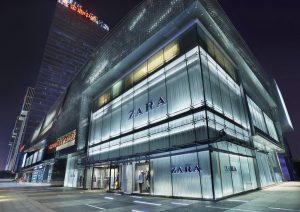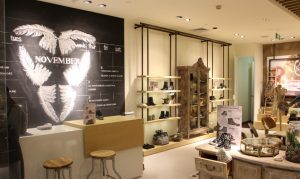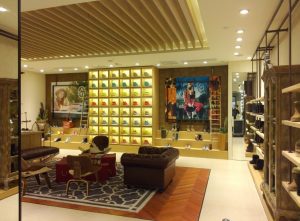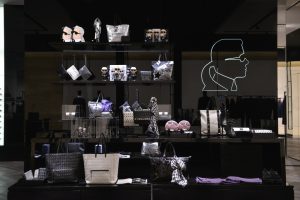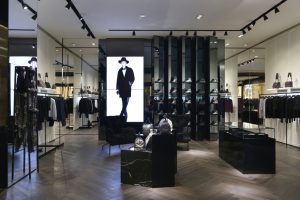Communist China is fast becoming the world’s largest capitalist country. The Economist Intelligence Unit (EIU) Ltd., the research and analysis arm of The Economist Group (London), recently forecast that China will overtake the U.S. as the world’s largest retail market by 2016.
In the four years between 2008 and 2012, the total retail sales of consumer goods in China doubled to ¥20.7 trillion ($3.3 trillion).
China already has nearly 3000 shopping centers, with an aggregate total commercial floor space of nearly 2 trillion square feet. But developers continue to build: 800 new mixed-use complexes – containing hotels, offices and retail – totaling 3.3 billion square feet, according to Knight Frank LLP (London), the international commercial property consultancy.
“The new Chinese generations are born to shop,” says Rob McKenzie, Hong Kong-based design director for the retail consultancy Prophet (New York). “They are frivolous spenders overwhelmed by consumerism and throw-away culture.”
European luxury brands have jumped into the market in a big way. Ermenigildo Zegna had a 43 percent increase in the last three years and now has 86 stores. Gucci more than doubled its store count. Louis Vuitton and Prada have also grown.
Burberry has expanded its Chinese retail presence by 26 percent in three years, and now has 62 stores. In fact, says The Times of London, Burberry posted record profits last financial year thanks largely to a 20 percent rise in sales in China.
Advertisement
And now here comes Karl Lagerfeld. After launching European retail concepts in Paris, Amsterdam, Berlin and Munich, the head designer and creative director of Chanel has gone into Shanghai and Beijing with comparable opulence.
“Almost everything in the Chinese stores has the same brand details as in Europe,” says architect Warner Franz, co-owner of the Plajer & Franz Studio (Berlin), who developed the concept under Lagerfeld’s artistic direction.
But it’s coming at a time when many are predicting a slowdown. Bain Capital (Boston) has estimated that annual growth in personal luxury sales has fallen from a high of 30 percent in 2011 to about 2 percent in 2013.
Though the country of nearly 1.5 billion people has a roaring GDP of more than $8 trillion, real GDP growth has slowed from annual double digits to 7.7 percent in 2013. In line with this, consumer expenditure growth is also reported to be slipping, from 11.3 percent in 2010 to 7.9 percent in 2013.
The Fung Group (Hong Kong) – whose holdings include retail, consumer goods, logistics and supply chain management, as well as business intelligence research – reported in its 2013 “Retail Market in China” study that total luxury goods consumption in China only grew 7 percent, a far cry from more than 30 percent in the previous two years. In the most recent Chinese New Year holiday period in January and February, traditionally the highest-spending period for the country, mainland China’s luxury spending totaled $830 million, a fall of 53 percent compared to the same period last year.
“Over the past year, the luxury brands have slowed store growth in China – in all of Asia, actually,” McKenzie says.
Advertisement
Knight Frank says up to 65 percent of luxury retailers opened fewer new stores last year in China than they had forecast.
Why? Several factors are at play.
A GROWING MIDDLE CLASS
McKinsey & Co. (New York) estimates that the number of Chinese earning around ¥120,000 a year (roughly $20,000) will grow from 6 percent of the population in 2010 to more than 50 percent by 2050.
As more of the Chinese consumer yuan flows down to the middle class, the more luxury brands run up against price sensitivity – especially further from the sophisticated retail centers like Shanghai, Hong Kong and Beijing.
Retail sales in China’s tier 3 and 4 cities rose 14.3 percent in 2013, a faster pace than the 12.5 percent growth in tier 1 and 2 urban sales – which is 1.8 percent lower than in 2012.
Advertisement
Chengdu, a second-tier city of 14 million in the inland Sichuan Province, has been singled out as the world’s most active retail development market.
Like aspirational shoppers everywhere else, the Chinese middle class is drawn to the trendy styles, but also to the low prices, of the fast-fashion international brands. Uniqlo (184 stores) has more than doubled its presence since 2010; Zara (123 stores) and H&M (122) have also grown. Even Gap now has 30 stores – it had only two in 2011.
“The appeal for luxury goods is slowing as fast fashion and high street brands take hold,” says Prophet’s McKenzie. “The rising Chinese middle class spends well but it’s looking for value, quality and seeing its money stretch further.”
TRAVEL ABROAD
Goldman Sachs has reported that the Chinese have overtaken the Japanese as the largest spenders in Europe, accounting for 18 percent of European luxury sales. The EIU’s 2014 report, “Chinese Luxury,” says, “Much of this retail tourism is driven by high prices in China. Imported luxury goods are heavily taxed, which can push prices up by 30-60 percent. Luxury goods firms also add a price premium in some markets to reflect higher logistical or investment costs.
“The risk of local counterfeits, a strong yuan and more choice abroad also favor shopping overseas.”
The brands themselves may not care if the purchase is made in Paris or London instead of Beijing or Shanghai. But it has had a slightly chilling affect on sales in China.
SUPPLY CHAIN CHALLENGES
Soaring logistics costs and relatively weak transport infrastructure add further hurdles for retailers and distributors, raising operating costs and squeezing profit margins. Keeping stores filled with merchandise can be tricky – and expensive – if you’re not one of the apparel brands that produce goods in Asia. The resulting overhead expenses make it difficult to operate profitably.
As a result, aggressive store expansion, to boost brand visibility, has been replaced by improving store productivity. A number of brand owners have started to close unprofitable stores and focus on improving core competencies.
The retailers continuing to grow have strong local infrastructure – like Ash Footwear (New York), the fashionable U.S. and European footwear brand that actually has executive offices in Hong Kong through its parent company, Highline United Holdings Ltd. Ash merchandise has long been available in upscale specialty stores within China like Harvey Nichols and Lane Crawford.
Ash has opened new stores in Shanghai, Chonqing and Nanjing, with more to come throughout China. Howard Ash (no relation), president and chief creative officer of Howard Ash Inc. in New York, has developed a store concept centered around what he calls “the boho chic” lifestyle, which he insists is a universal sensibility to which Chinese hipsters will relate.
“They’re very aware of trends,” he says. “They’ll go online to find out about whatever the current ‘Western thing’ is.”
SURFING THE MULTI-CHANNEL
In fact, this enormous web exposure is what some see as the biggest challenge for Western luxury retail in China. The Chinese consumer is an extremely sophisticated, active online shopper, shifting the focus from brand stores to Internet commerce.
Online sales last year in China jumped by almost 65 percent, to an astounding ¥12.5 trillion, accounting for 6.3 percent of total retail sales. According to the Fung Group report, “Increasing numbers of e-payment providers have launched mobile services, making such payments increasingly easier, safer and more popular.”
On the other hand, China has a well-developed cottage industry of intellectual property theft. The counterfeiting of Western luxury goods has made sophisticated Chinese consumers less trusting of online purchases.
“To the Asian consumer, brand X could have come from anywhere,” McKenzie says. “Fake brands are commonplace. This is where communicating the brand story is key. Asian consumers need reassurance of a brand’s history and authenticity.”
And, as the EIU report points out, the highest-end Chinese shopper still prizes elegant stores with outstanding customer service.
“A digital device is just another channel for consumers looking for a good deal,” says McKenzie. “If the in-store experience is enjoyable and the service is something to talk about, consumers will find little reason to look elsewhere.”
You still can’t get that from the Internet.
For more photos of Ash Footwear, click here.
For more photos of Karl Lagerfeld, click here.
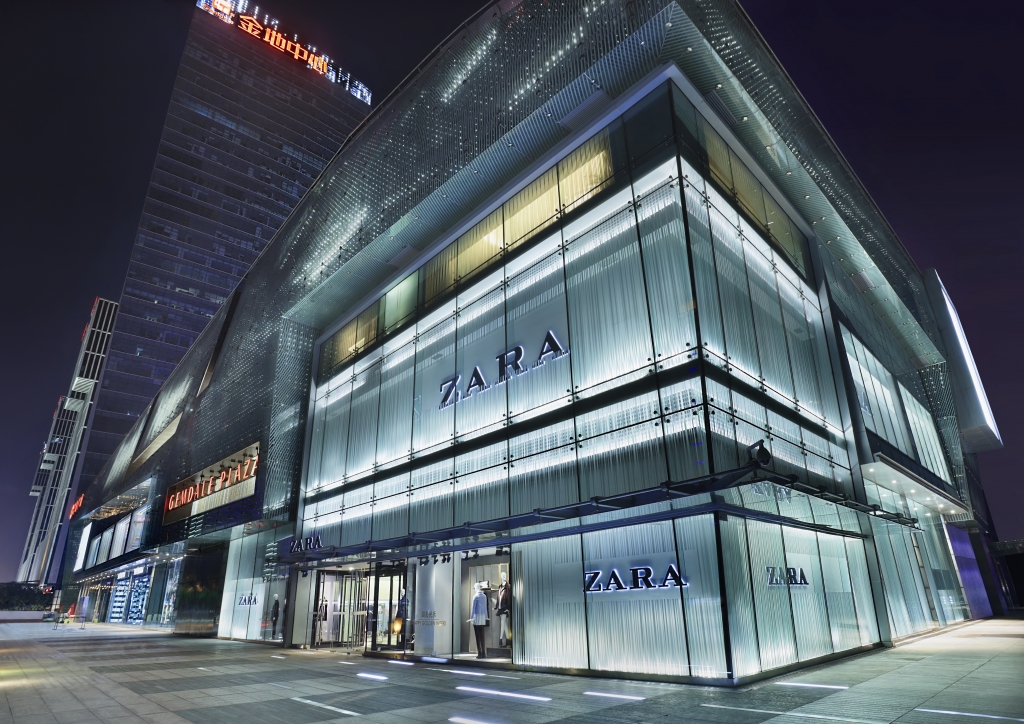

 Photo Gallery1 week ago
Photo Gallery1 week ago
 Headlines2 days ago
Headlines2 days ago
 Headlines1 week ago
Headlines1 week ago
 Headlines1 week ago
Headlines1 week ago
 Designer Dozen2 weeks ago
Designer Dozen2 weeks ago
 Headlines1 week ago
Headlines1 week ago
 Designer Dozen6 days ago
Designer Dozen6 days ago
 Headlines1 week ago
Headlines1 week ago
